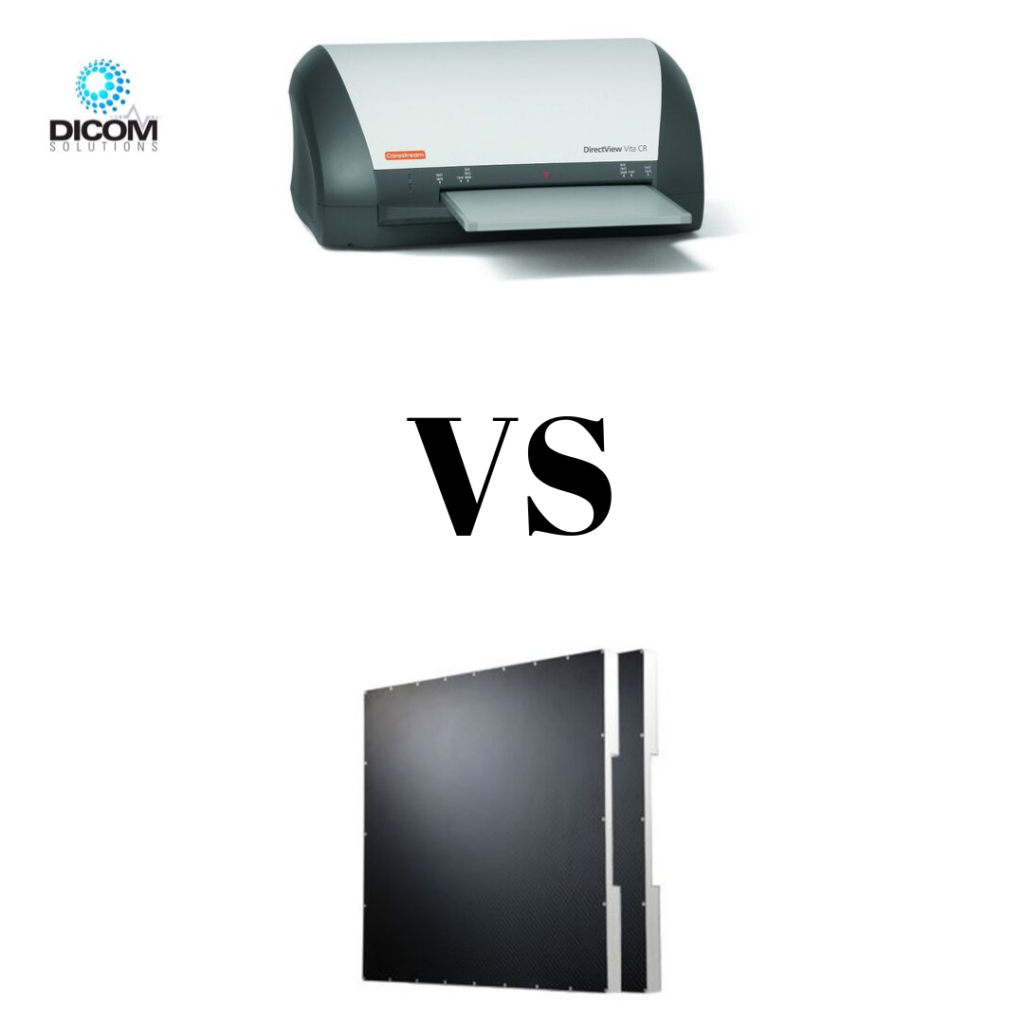
All sizes and sorts of medical facilities want to make the shift to digital imaging, may it be CR or DR.
These are two basic types of imaging processes available through Dicom Solutions for your use, and they are CR, computed radiography, and DR, direct digital radiography.
Understanding their differences and benefits will help you make the right choice for your digital imaging needs.
Both processes result in digital images appropriate for use in medical offices and hospitals. The CR process has been around for seventeen years longer than DR, and DR is generally more costly than CR to set up in terms of equipment, its installation and other related costs.
Because it is a newer technology, digital radiology x-rays usually requires the purchase of brand new equipment. That equipment has to fit into radiography rooms that were built with different equipment in mind, and so sometimes construction costs for retrofitting the existing room is needed.
Another difference between CR vs DR is the speed of imaging. Because CR requires extra steps in the process of digital imaging it is slower than DR in imaging speed. However, newly developed CR processes have dramatically shortened the amount of time from taking the image to seeing the image.
Speed is obviously reduced if you have to adjust equipment to take different kinds of digital images, and that, along with a lower number of patients being seen at smaller clinics, could make CR a more cost effective but no less efficient choice for digital image processing at smaller medical facilities.
In terms of portability, both CR and DR processes can be utilized away from the home office. However, CR currently allows you more choices in terms of taking images of patients lying or sitting down, which is currently not possible with DR.
The CR process uses a cassette for digital image data collection. The DR process uses a collection plate and does not use cassettes, giving a cost savings in this regard. Collection plates are more costly than cassettes, which is a consideration if you are using them in ways where breakage is more likely to occur.
In terms of the quality of images produced using these processes, digital images still do not offer quite the resolution available with film images. Even so, DR offers better resolution currently than does CR, although newer technologies are beginning to bridge that gap. Because the images are digital, they both allow for image enhancement.
Medical facilities will also want to determine the radiation used to effect the digital imaging processes. At this time, DR uses less radiation to gather digital data than does CR.
One thing is certain: both CR and DR are considerably faster than film in producing images, and those images produced can be stored in a fraction of the space used for film image storage. Dicom Solutions can help you by providing information about CR and DR processes suitable for your medical facility.vs